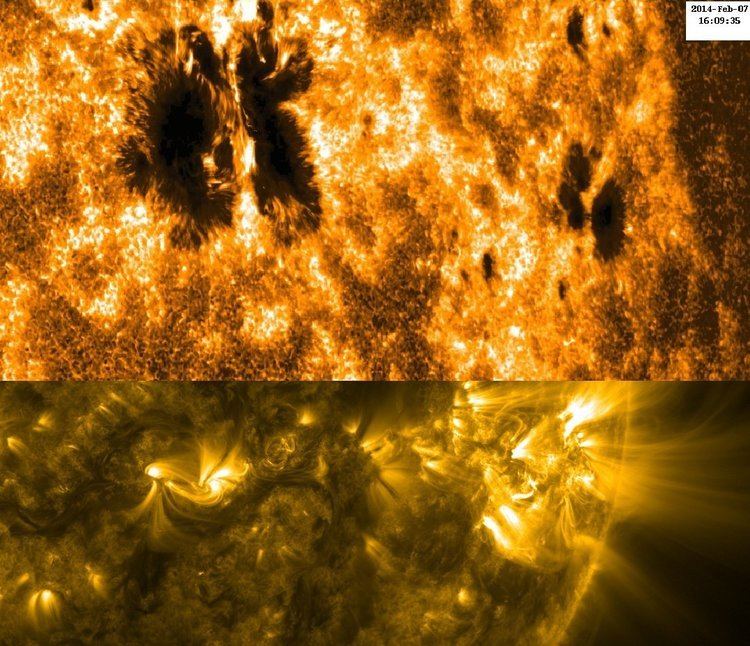Names Solar-B COSPAR ID 2006-041A Launch date 22 September 2006 Launch mass 700 kg Manufacturer JAXA | Operator JAXA / NASA / PPARC SATCAT no. 29479 Launch mass 700 kg Rocket M-V Launch site Uchinoura Space Center | |
 | ||
Website JAXA Hinode mission,NASA Hinode mission Mission duration elapsed: 10 years, 5 months and 18 days Similar Solar Dynamics Observatory, Solar and Heliospheric Observatory, TRACE, Yohkoh, STEREO | ||
Hinode launch
Hinode (/ˈhiːnoʊdeɪ/; Japanese: ひので, [çinode], Sunrise), formerly Solar-B, is a Japan Aerospace Exploration Agency Solar mission with United States and United Kingdom collaboration. It is the follow-up to the Yohkoh (Solar-A) mission and it was launched on the final flight of the M-V-7 rocket from Uchinoura Space Center, Japan on 22 September 2006 at 21:36 UTC (23 September, 06:36 JST). Initial orbit was perigee height 280 km, apogee height 686 km, inclination 98.3 degrees. Then the satellite maneuvered to the quasi-circular sun-synchronous orbit over the day/night terminator, which allows near-continuous observation of the Sun. On 28 October 2006, the probe's instruments captured their first images.
Contents
The data from Hinode are being downloaded to the Norwegian, terrestrial Svalsat station, operated by Kongsberg a few kilometres west of Longyearbyen, Svalbard. From there, data are transmitted by Telenor through a fibre-optic network to mainland Norway at Harstad, and on to data users in North America, Europe and Japan.
Hinode 10th anniversary of its launch
Mission
Hinode was planned as a three-year mission to explore the magnetic fields of the Sun. It consists of a coordinated set of optical, extreme ultraviolet (EUV), and x-ray instruments to investigate the interaction between the Sun's magnetic field and its corona. The result will be an improved understanding of the mechanisms that power the solar atmosphere and drive solar eruptions. The EUV imaging spectrometer ( EIS ) was built by a consortium led by the Mullard Space Science Laboratory (MSSL) in the UK. NASA, the space agency of the United States, was involved with three science instrument components: the Focal Plane Package (FPP), the X-Ray Telescope (XRT), and the Extreme Ultraviolet Imaging Spectrometer (EIS) and shares operations support for science planning and instrument command generation.
Instruments
Hinode carries three main instruments to study the Sun:
